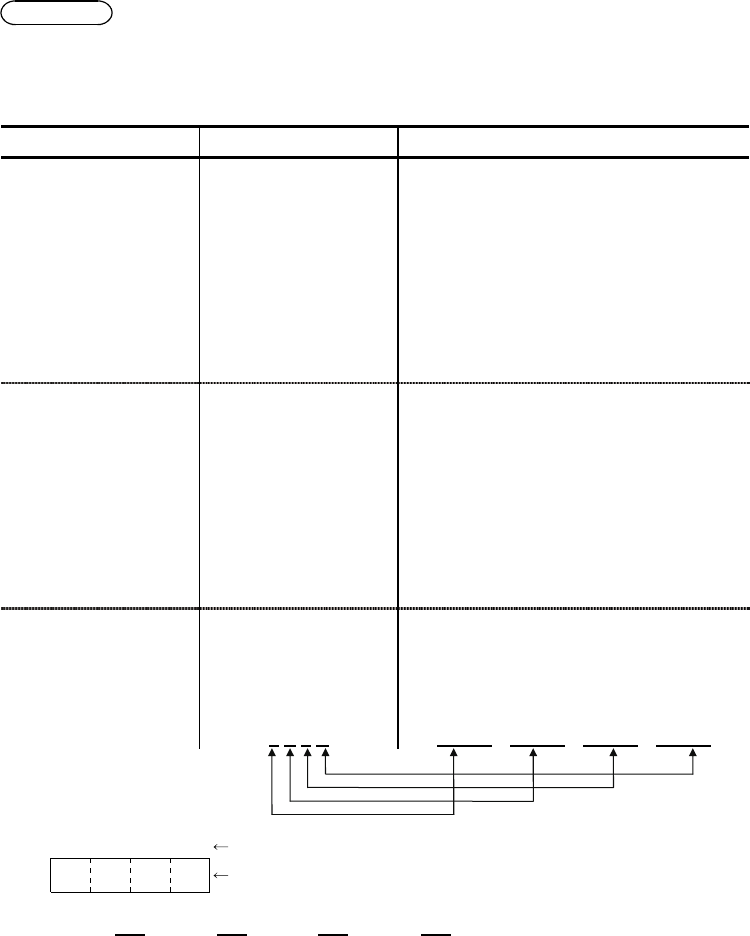
5 - 3
Hexadecimal
The hexadecimal number system consists of 16 symbols: 0 to 9 and A to F
which represent the order and size (amount). After a digit reaches F, an
increment is reset to 0 and the next digit (to the left) is incremented.
Decimal Hexadecimal Binary
0 0 0
1 1 1
2 2 10
3 3 11
4 4 100
5 5 101
6 6 110
7 7 111
8 8 1000
9 9 1001
10 A 1010
11 B 1011
12 C 1100
13 D 1101
14 E 1110
15 F 1111
16 10 10000
17 11 10001
18 12 10010
…
…
…
1 9 1 0 1 4 A 9 D 0 1 0 0 1 0 1 0 1 0 0 1 1 1 0 1
4
3
A
2
9
1
D
0
Digit number
Hexadecimal
= (4) × 16
3
+ (A) × 16
2
+ (9) × 16
1
+ (D) × 16
0
= 4 × 4096 + 10 × 256 + 9 × 16 + 13 × 1
= 19101
Four bits of a binary number equal to one digit of a hexadecimal number.
In the MELSEC-Q series programmable controller, symbol "H" is used for
indicating a hexadecimal number.
The hexadecimal system is used to represent the following device numbers.
• Input and output (X, Y)
• Function input and output (FX, FY)
• Link relay (B)
• Link register (W)
• Link special relay (SB)
• Link special register (SW)
• Link direct device (Jn\X, Jn\Y, Jn\B, Jn\SB, Jn\W, Jn\SW)
"Power of digit"
n: Digit number
16: Hexadecimal


















